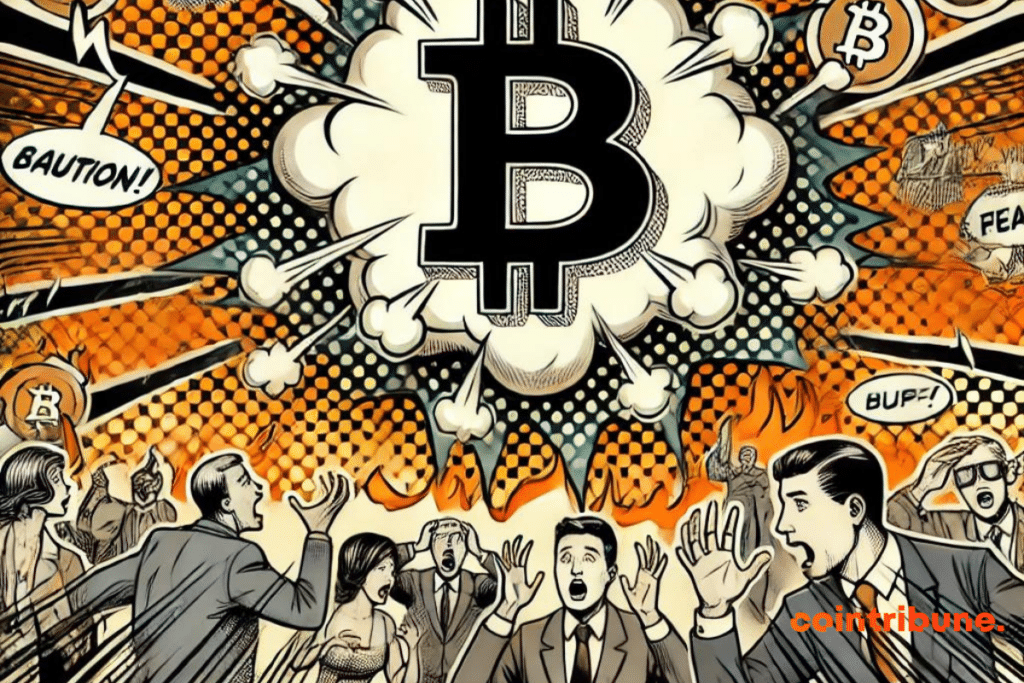Bitcoin: Fear & Greed Index Plummets into Fear!
When Bitcoin trembles, the whole crypto ecosystem feels the shockwave. On Friday, the Bitcoin Fear & Greed Index, an indicator often closely watched, fell into the “fear” zone, reaching 37. A figure that speaks volumes about the market mood. But what does this creeping fear mean, and how does it influence Bitcoin’s future? Let’s dive into the details to learn more.

The Fear Signal: Why It Matters
The Fear & Greed Index, which measures investor sentiment based on different factors, is considered a barometer of market mood.
By entering the “fear” zone, this index signals some apprehension among investors, reflecting emotions ranging from caution to panic. With a score of 37, it’s clear that doubt has set in, affecting buying and selling dynamics.
But is this fear arising now due to the revelation of Satoshi Nakamoto? One of the reasons could be the overall economic situation and the uncertainties surrounding central bank policies.
Inflation that is slow to stabilize and Fed decisions tend to send shockwaves through riskier assets like Bitcoin.
Furthermore, announcements like the FBI warning of scams on crypto platforms only add another layer to this climate of mistrust.
However, market fear is not always negative. It can be an opportunity for some bold investors to enter at more attractive prices.
A mentality of “buy when everyone is afraid” seems to prevail among some, particularly institutional investors who tend to be aggressive when the market shows signs of weakness.
A Shaken Market, but a Recovery in Sight?
On Saturday, the index already showed signs of recovery, climbing to 49. This swift move towards the “neutral” zone is an encouraging signal for some traders, as it shows that investor confidence has not completely disappeared.
The evolution of Bitcoin’s price, which increased by 1.15% simultaneously, is also a good indicator that market players are gradually regaining their composure.
This oscillation between fear and neutrality shows that the market is in a phase of uncertainty. Investors are attentive to economic news, such as U.S. job creation exceeding expectations.
This renewed confidence in the economy could have an indirect impact on Bitcoin, as a stable economic environment favors risk-taking on assets like crypto.
The role of institutional investors is also crucial here. Recently, BlackRock has stood out by increasing its exposure to Bitcoin while other asset managers took a more cautious approach or even withdrew. This divergence shows that Bitcoin remains a polarizing asset: some see it as a safe haven, while others prefer to wait for greater market stability.
In conclusion, Bitcoin, while going through these phases of doubt, continues to show resilience to storms. The Fear & Greed Index can serve as an emotional compass, but it’s analysis, strategy, and perseverance that determine the real path to follow. According to an expert, it’s the ideal time to buy.
Maximize your Cointribune experience with our "Read to Earn" program! For every article you read, earn points and access exclusive rewards. Sign up now and start earning benefits.

Fascinated by Bitcoin since 2017, Evariste has continuously researched the subject. While his initial interest was in trading, he now actively seeks to understand all advances centered on cryptocurrencies. As an editor, he strives to consistently deliver high-quality work that reflects the state of the sector as a whole.
The views, thoughts, and opinions expressed in this article belong solely to the author, and should not be taken as investment advice. Do your own research before taking any investment decisions.